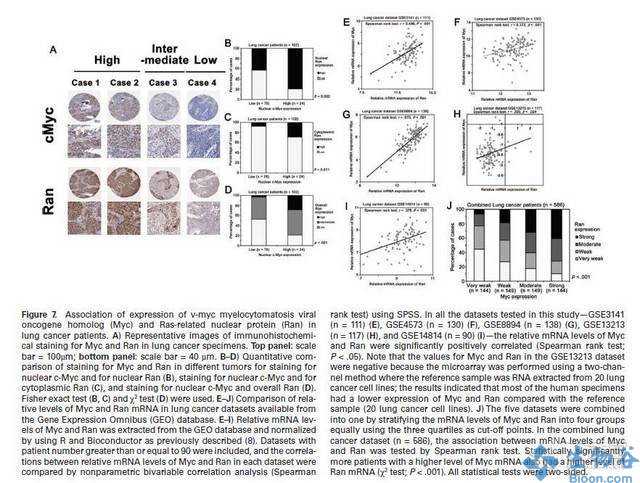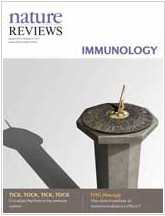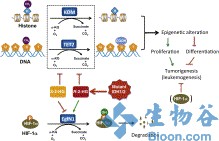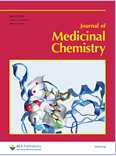Plos one:低和高恶性神经胶质瘤基因组学机制差异
2013-04-01 北京基因组研究所 北京基因组研究所
近日,中国科学院北京基因组研究所基因组科学与信息重点实验室于军研究员带领其团队与吉林大学第一医院开展合作研究,比较了中国人群中低级别胶质瘤(Low-Grade Glioma,LGG)和高级别胶质瘤(High-Grade Glioma,HGG)的基因组变异,找出了肿瘤相关的不同水平的差异,比如核酸序列、基因和富集的代谢通路和细胞生物学功能。该学术论文已于2月22日在PLoS ONE杂志发表,并被Ge
近日,中国科学院北京基因组研究所基因组科学与信息重点实验室于军研究员带领其团队与吉林大学第一医院开展合作研究,比较了中国人群中低级别胶质瘤(Low-Grade Glioma,LGG)和高级别胶质瘤(High-Grade Glioma,HGG)的基因组变异,找出了肿瘤相关的不同水平的差异,比如核酸序列、基因和富集的代谢通路和细胞生物学功能。该学术论文已于2月22日在PLoS ONE杂志发表,并被GenomeWeb网站的“The Daily Scan”评论。于军研究组王大鹏博士为论文的共同第一作者。
神经胶质瘤(Gliomas)是颅内最常见的恶性肿瘤,根据恶性分级组织学分为I~IV级。大量的基因组畸变和基因表达研究已经找出在某些方面影响胶质瘤的基因,包括细胞功能、代谢途径、神经发育、肿瘤抑制等方面。然而,针对于中国人群的胶质瘤基因组变异和分子机制的研究仍然欠缺。
此次,研究人员针对于中国人群比较分析了低级别胶质瘤和高级别胶质瘤间的基因组变异,结果显示高分级胶质瘤基因组在染色体区带(cytoband)水平的缺失明显多于低分级胶质瘤。该项研究不仅在不同程度上验证了从前的研究结果,而且新发现了一些区分这两种级别胶质瘤的功能类别,比如,低级别相关的功能为“花生四烯酸代谢”、“DNA结合”和“DNA依赖的转录调控”;高级别相关的功能为“刺激神经组织的配体-受体相互作用”、“神经元胞体”和“对细菌的防卫反应”。该研究发现的两种级别胶质瘤的不同分子信号将为不同级别胶质瘤在诊断、治疗和预后等方面差异化对待提供依据,为基因学研究成果到临床医学的转化搭建一座桥梁。

doi:10.1371/journal.pone.0057168
PMC:
PMID:
Distinct Genomic Aberrations between Low-Grade and High-Grade Gliomas of Chinese Patients
Yunbo Li equal contributor,Dapeng Wang equal contributor,Lei Wang equal contributor,Jinhai Yu,Danhua Du,Ye Chen,Peng Gao,Duen-Mei Wang,Jun Yu,Feng Zhang,Shuanglin Fu
Background
Glioma is a type of tumor that develops in the central nerve system, mainly the brain. Alterations of genomic sequence and sequence segments (such as copy number variations or CNV and copy neutral loss of heterozygosities or cnLOH) are thought to be a major determinant of the tumor grade.
Methods
We mapped genomic variations between low-grade and high-grade gliomas (LGG and HGG) in Chinese population based on Illumina’s Beadchip and validated the results using real-time qPCR.
Results
At the cytoband level, we discovered: (1) unique losses in LGG on 5q, 8p and 11q, and in HGG on 6q, 11p, 13q and 19q; (2) unique gains in the LGG on 1p and in HGG at 5p, 7p, 7q and 20q; and (3) cnLOH in HGG only on 3q, 8q, 10p, 14q, 15q, 17p, 17q, 18q and 21q. Subsequently, we confirmed well-characterized oncogenes among tumor-related loci (such as EGFR and KIT) and detected novel genes that gained chromosome sequences (such as AASS, HYAL4, NDUFA5 and SPAM1) in both LGG and HGG. In addition, we found gains, losses, and cnLOH in several genes, including VN1R2, VN1R4, and ZNF677, in multiple samples. Mapping grade-associated pathways and their related gene ontology (GO) terms, we classified LGG-associated functions as “arachidonic acid metabolism”, “DNA binding” and “regulation of DNA-dependent transcription” and the HGG-associated as “neuroactive ligand-receptor interaction”, “neuronal cell body” and “defense response to bacterium”.
Conclusion
LGG and HGG appear to have different molecular signatures in genomic variations and our results provide invaluable information for the diagnosis and treatment of gliomas in patients with variable duration or diverse tumor differentiation.
本网站所有内容来源注明为“梅斯医学”或“MedSci原创”的文字、图片和音视频资料,版权均属于梅斯医学所有。非经授权,任何媒体、网站或个人不得转载,授权转载时须注明来源为“梅斯医学”。其它来源的文章系转载文章,或“梅斯号”自媒体发布的文章,仅系出于传递更多信息之目的,本站仅负责审核内容合规,其内容不代表本站立场,本站不负责内容的准确性和版权。如果存在侵权、或不希望被转载的媒体或个人可与我们联系,我们将立即进行删除处理。
在此留言














#Plos one#
29
#神经胶质瘤#
46
#基因组学#
43